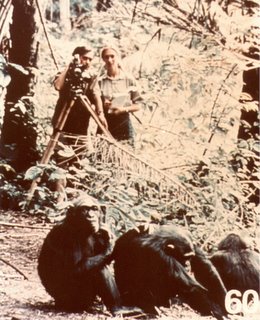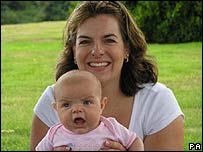
On Wednesday, April 22, 1970, I was still in high school, and played “hooky” from classes at my downtown Boston school to spend the day on the MIT campus in Cambridge, cheek-to-cheek with other high-schoolers, graduate students, undergrads, academics and the press.
It was the 1970 Environmental Teach-In, meant to be a one-shot expository day and turning into the first celebration of the non-equinoctial “Earth Day.” * A day of concentration on activities for sustaining the ecology of the planet, on how to preserve what resources were still available, and review how to minimize man’s impact on the balance of the remaining wilderness and planetary environment.
It was a time when some conservative political players (usually backed by pro-business and petro/mineral exploitation interests) tried to deny the existence of “ecology” as either a discipline of study or even validity as a word itself, even though the term had been coined (as
oekologie) by Ernst von Haeckel in 1866 (von Haeckel was a Lamarckian zoologist who founded a philosophy called ‘Monism” and coined the (now) discredited axiom "
ontogeny recapitulates phylogeny"). It was also a time when most of the world’s general public was blissfully unaware of the intricate delicacy of the dance of interaction between participants and the environment’s underlying structures.

1970 also marked the 10-year anniversary of
Jane Goodall’s first observations of chimpanzees in the Gombe Stream National Park in Tanzania (when she arrived in 1960 the nation was called Tanganyika) and the year that the National Geographic Society reprinted their edition of
My Friends the Wild Chimpanzees In the years since, Earth Day in the U.S. enjoyed a period of official and public support, coupled with the enactment of legislation that recognized that economic considerations may need to be considered secondary to environmental considerations. Since the dawn of the new century, however, the trend seems to have been reversed and 5 years of new legislation has been attempting to reverse 30 years of progress. And the federal government’s support of “Earth Day” has been to prop up a sickly façade, where Clinton-administration advances are presented in such a way as to imply that the progress was due to the G.W. Bush efforts, and support for such farces as the “Healthy Forests” and “Clean Skies” programs are presented as “Initiatives” that are beneficial to the ecology, when the “environment” that is really to benefit is the economic one of big-lobby industrial interests.
Conversely, Goodall went on to research and author papers on the Egyptian Vulture, African baboons and Spotted Hyenas, but always returned to the chimpanzees at Gombe. She was able to capitalize on the popularity of her books, the weight of her accomplishments in primatology and her own presence as a speaker, to have some remarkable success in bringing attention to issues such as poaching of primates (for purposes as diverse as “bush meat,” slaughter for folk medicines or illegal transshipment to foreign zoos), destruction of habitat and the use of primates as subjects in medical experimentation.
In order to provide a more organized presence for her initial efforts at habitat preservation, and to provide ongoing support for field research on wild chimpanzees, “Dr. Jane” founded the
Jane Goodall Institute for Wildlife Research, Education and Conservation in 1977. With her work at the Jane Goodall Institute, she is now “on the road” for about 300 days of each year.
Jane Goodall also formed a separate organization, in 1991, named
“Roots and Shoots,” that “plans and implements service-learning projects that promote care and concern for animals, the environment, and the human community.” Roots and Shoots started with 16 youngsters on the front porch of Dr. Goodall’s home in Dar es Salaam and now has more than 7,500 groups in more than 90 countries
In the 35 years since I skipped school on that Wednesday in 1970, I was involved with a number of environmental groups (some more effective than others), went on to college myself, fell away from the True Faith of the Environmental Front Lines, and have come full circle, back to wondering how I, as a single private citizen, can effect change, driven by the thought that my children, and grandchildren, may never see the world whole, or healthy.
My thought is that my best practice, aside from urging my elected representatives in voting against abominations such the “Clean Skies Initiative,” is education. Educating my children and (perhaps through The Boston Progressive) educating the public.

As part of educating my children, I try to engage them with as much exposure to the "natural world" as I can, including such "captive nature" as zoos (even in the zoo you can show how the artificial setting differs from, and affects, the animals). I recently noticed that Jane Goodall would be making a speech, in commemoration of Earth Day, at Boston’s
Franklin Park Zoo, (which is a regional coordinating host for the Roots and Shoots program) and we altered the date for an already planned visit to Franklin Park to cooincide with her visit and to see her speech.
We arrived at the zoo, on a chilly and grey day, close before opening time (when we pulled in, we were the only car in the visitor’s parking lot), and saw Dr. Goodall arrive on the grounds. We had several hours yet before the scheduled date for her speech, so we “took the airs” and wandered the several areas of the zoo’s collection. I’m naught but an occasional zoo visitor, so I really don’t know the relative worth of the Franklin Park Zoo’s collection or presentation, but, all the experience being new to them, both of my boys (aged 4 and 8) enjoyed themselves (my 4-year old son was absolutely captivated by the family of lowland gorillas). I’d like to be able to say that the skies magically cleared and the temperature rose as it came time for Dr. Goodall’s speech, but the clouds stubbornly refused to disburse, and the wind even picked up.
When Dr. Goodall took to the podium, one saw a woman who is moving gracefully through age, and presents a kind of vulnerability that was present in films taken during her first years at Gombe. Not a physical frailty or infirmity, but rather a feeling that she would never really credit that people could ever do or think anything but the best, if only they were shown what the truth was, and where the real world’s priorities should lie.
She told some anecdotes about her days at Gombe, and noted the very close genetic similarity between chimpanzees and homo sapiens (given a match in blood type, transfusion across strains are effective – which makes chimpanzees prime material for AIDS/HIV vector and progression research), and noted that economic factors are forcing native destruction of habitat and environment, and the outside world appears either oblivious or has determined not to attempt to work towards changing conditions. She praised those who work with the Roots and Shoots programs, and noted a remarkable program that the new president in Tanzania was embarking on, that all plastic bags in that country would be removed from commerce, and that only paper and cloth would be used for bags from stores.
I’m afraid that, with an exhausted four-year sleeping on my shoulder, and my membership “in the choir,” I didn’t find the portions of her speech on ecology as electrifying as some in the audience did. Interesting, thoughtful, but not, overall, remarkable. What I did find more captivating were the anecdotes on her years at Gombe, and thoroughly startling was when she demonstrated some of the “language” and calls her chimpanzees used, including a change in timbre and power of her voice, from that of a relatively unassuming Englishwoman, when she articulated those calls, including a truly amazing exhibition of a “distance call” that I could readily image carrying across mountain valleys.
Although I did not find her presentation itself awe-inspiring, her power as a symbol in the world’s environmental awareness is unquestioned. And the knowledge that this one woman has had the ability, through education of the world’s people, to bring real change to the policies of nations, is awe-inspiring.
What was unquestionably sad, though, was that none of the local news outlets thought that her appearance was noteworthy enough to even send a film crew to, never mind do a broadcast about.
She appears to be, either still, or again, the prophetic voice crying in the wilderness.
----------------------------
* There is a “competing” Earth Day celebration internationally that is a movable feast, being celebrated each year during the vernal equinox. There is a (perhaps) cynical observation that the timing of the original Earth Day in late April, 1970, was chosen because it fell between spring break and final exams allowed for more participation on U.S. college campuses
-- My own camera is currently dysfunctional -- the photograph of Goodall at the podium is courtesy of the Jane Goodall Institute































